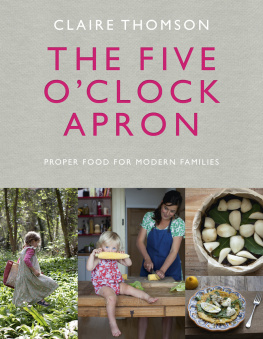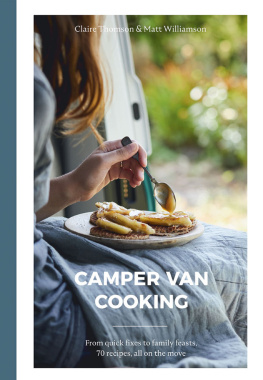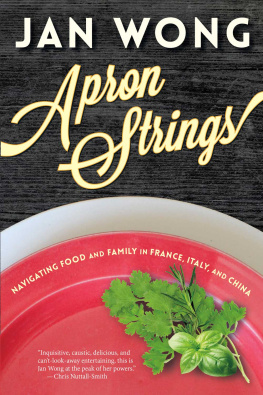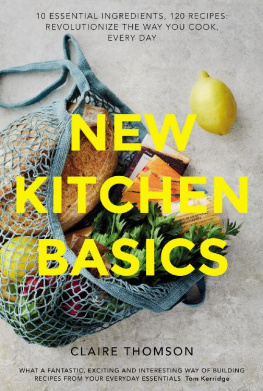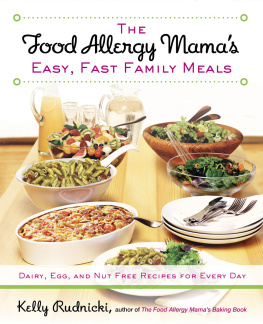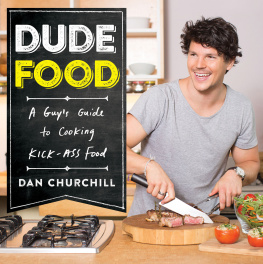CONTENTS
This ebook is copyright material and must not be copied, reproduced, transferred, distributed, leased, licensed or publicly performed or used in any way except as specifically permitted in writing by the publishers, as allowed under the terms and conditions under which it was purchased or as strictly permitted by applicable copyright law. Any unauthorized distribution or use of this text may be a direct infringement of the authors and publishers rights and those responsible may be liable in law accordingly.
Version 1.0
Epub ISBN 9781473502291
www.randomhouse.co.uk
10 9 8 7 6 5 4 3 2 1
Ebury Press, an imprint of Ebury Publishing
20 Vauxhall Bridge Road
London, SW1V 2SA
Ebury Press is part of the Penguin Random House group of companies whose addresses can be found at: global.penguinrandomhouse.com
Text Claire Thomson 2015
Photography Ebury Press 2015
Claire Thomson has asserted her right to be identified as the author of this Work in accordance with the Copyright, Designs and Patents Act 1988
First published by Ebury Press in 2015
www.eburypublishing.co.uk
A CIP catalogue record for this book is available from the British Library
Photography: Mike Lusmore
Illustrations: Alex Lucas
Editor: Annie Lee
Design: Interstate Creative Partners
Cover design: Two Associates
ISBN: 9780091958497
Colour origination by Altaimage
About the Book
Faced with the daily challenge of what to cook for her three young children, chef and mum Claire Thomson made it her mission to inspire parents stuck in a teatime rut. Every day she makes a proper tea, tweeting it at 5pm from that her blog 5 Oclock Apron was born and a popular Guardian column on cooking for children followed.
Claire wants to inspire other parents and invigorate the concept of family cookery. Cooking shouldnt be a chore, one meal for the grown-ups and another for the children. Claires fresh, exciting meals are versatile and flavourful enough to please everyone around the table, encouraging parents to view food differently, to refresh their culinary imaginations and find real joy in cooking for their children.
Featuring sections on milk, bread, grains, pulses, rice, vegetables, fruit and fish, 5 Oclock Apron will engage and empower parents. Not just a recipe book, but a way of thinking about how to shop, cook, eat and celebrate as a family, Claire provides a unique insight, as both a mother and a chef, into what really makes food appealing for children.
About the Author
Claire Thomson is a food writer, chef and co-owner of Flinty Red restaurant in Bristol. She has three young daughters and writes a regular Guardian column on cooking for children. She lives in Bristol with her family. This is her first book.
I COOK, A LOT
often with the clock ticking and the Im hungry anthem gaining traction. Breakfast, lunch, supper. Snacks too. Children can eat an extraordinary amount, all things considered. Its therefore essential that this food is nutritious, delicious and relatively easy to produce. My background as a chef has helped enormously in this regard. When cooking for my three children (and often those of others), I try to cook with imagination, ease and, for the most part, speed. I am lucky. But for some, the task of producing food day in, day out seems like a relentless chore.
Short on time and week-night weary of imagination, it is all too easy to fall into a cookery loop. Spaghetti Bolognese Monday and shepherds pie Thursday offer an easy, albeit lobotomizing, rhythm to the week. Children are notorious when it comes to what they will and wont put in their mouths. Contrary, wilful, at worst fussy, having to cajole kids into eating food they dont want is one of lifes most frustrating, time-consuming and head-bangingly awful tasks.
Heres my suggestion: turn cooking on its head. Heal the schism in family cookery. The notion of childrens food is something to baulk at. Smiley-faced food is ridiculous food should look like food. Make food interesting. And children will then be interested in it. Children like flavour-FUL food, as do the grown-ups cooking and eating it themselves. Make vegetables core to the family diet. Make them exciting and joyful. Cook a cabbage with bulgur, tomato and garlic, sweeten it with cinnamon and allspice and serve it with plain yoghurt to dollop and toasted seeds to sprinkle over. Where once cabbage might have sat untouched on the side of the plate, that same cabbage is now golloped greedily.
Having to cook separate food for children is laborious and unnecessary. Whether parents choose to eat an early supper with their children or whether its eaten separately, the prospect of cooking just one meal is appealing. The recipes in this book are versatile enough to appease everyone and are transferable to a more adult-appropriate supper time (along with extra salt, perhaps, and a glass of wine).
More than just writing a book, in an apron and on a crusade, Im keen to inspire and invigorate the concept of family cookery. Standing at the stovetop, I cook with affection and with an eye for sustenance.
Elbows down. Knives and forks at the ready, and were off
THOUGHTS ON MEASUREMENTS AND OTHER KITCHEN TRAPPINGS
SALT
When cooking for children, I am judicious with salt. If I do use salt, I tend to add it at the beginning of the cooking. This way what salt you do use will integrate better with the food and, so the theory goes, you then need less.
For food that is cooked with children in mind, then destined for grown-up consumption, I like to have some crunchy sea salt flakes or rock salt in a mill on the table to add per person, per plate. Salt is crucial to enhancing the flavour of food. I would far rather use salt wisely in my cooking at home and steer clear of more processed foods. That so many breakfast cereals and biscuits list salt as a key ingredient is something I find a mite malevolent.
With salt as such a matter of personal preference, I have found it tricky to be exacting about quantities in my recipes. Above all, food should be tasted throughout the cooking process. The term seasoning (I use it often in this book) is a helpful reminder that food will always be specific to individual taste. Ingredients are seasoned with salt, pepper, spice or herbs according to who is eating them and with what they are being eaten.
OLIVE OIL
Again, in writing this book, I have found it agreeably problematic to nail exact measurements to the wall of my olive oil usage. A splosh into a pan to saut some vegetables might equate to a couple of tablespoons. A trickle on to some yoghurt to serve at the table with a pilaf might end up just being the one tablespoon. And while I am happy with the measurements given for olive oil in these recipes, they are guidelines. The adage how long is a piece of string rings true for me, my cooking and that bottle of olive oil. Glug. Glug. Glug

